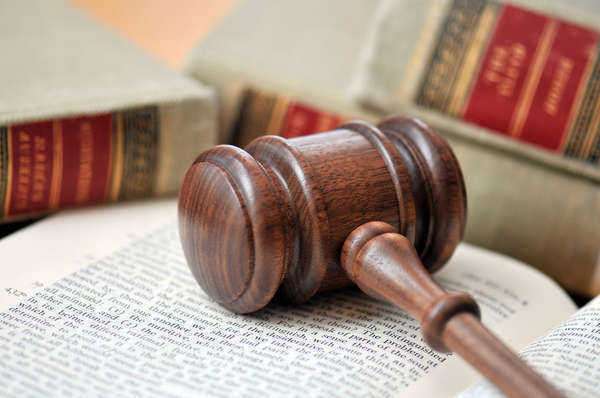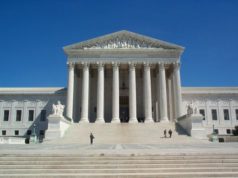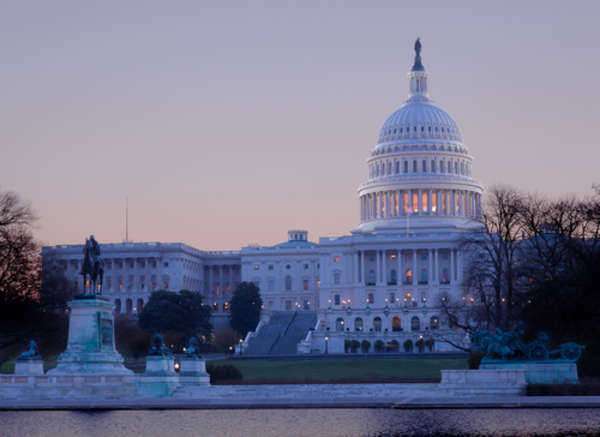
The Supreme Court of the United States of America is one of the most prominent judicial institutions in the world. As the highest court in the land, it has the authority to interpret the Constitution and determine the constitutionality of laws passed by Congress and state legislatures. However, the Supreme Court is unique among the branches of government – it is seemingly removed from the political process, and operates as a separate institution. This separation is both implicit and explicit – while the Court’s independence is not explicitly written into the Constitution, it is widely accepted as a crucial feature of the American legal system. In this article, we will explore the ways in which the Supreme Court is implicitly separated from other branches of government.
The founding fathers envisioned a government with three branches – the legislative, executive, and judicial branches. The legislative branch would write the laws, the executive branch would enforce them, and the judicial branch would interpret them. This separation of powers was intended to prevent any one branch from becoming too powerful and to ensure that the government was accountable to the people. However, the Constitution did not explicitly state that the Supreme Court was meant to be independent of the other branches of government. In fact, the Court’s powers are enumerated in Article III of the Constitution, which defines the judicial branch and grants the Court “the judicial power of the United States.” It is only through the Court’s actions over the years that its independence has become an accepted part of American legal tradition.
One way in which the Supreme Court is separated from the other branches of government is through the appointment process. Unlike members of Congress and the President, who are elected by the people, Supreme Court justices are appointed by the President and confirmed by the Senate. This means that they are not beholden to popular opinion or political pressure in the same way that other government officials are. Justices are appointed for life, which allows them to serve without fear of losing their jobs. This independence insulates them from political pressure and allows them to make decisions based solely on their interpretation of the Constitution and the law.
Another way in which the Supreme Court is implicitly separated from the other branches of government is through its jurisdiction. The Court has the power to hear cases that involve federal law, the Constitution, and disputes between states. This means that the Court can declare laws passed by Congress or state legislatures unconstitutional, and strike them down. Because the Court has the final say on what the Constitution means, it is able to act as a check on the other branches of government. This power gives the Court a unique role in American politics, and helps to maintain the separation of powers that is so crucial to the functioning of our government.
The Court’s independence is also reflected in its decision-making process. Unlike the other branches of government, the Supreme Court does not deliberate in public. Justices meet in private to discuss cases and reach a decision, and their opinions are published only after the decision has been made. This allows the justices to deliberate without fear of political pressure or public opinion. It also means that the Court is less susceptible to outside influence than other branches of government. While members of Congress and the President must constantly be aware of public opinion and the reactions of interest groups, the Supreme Court can operate largely independent of these external forces.
The Court’s independence is also reflected in its ability to maintain institutional legitimacy. The Court can only function if it is seen as an impartial arbiter of the law, rather than a political entity. To this end, the Court has developed a number of practices and procedures that help to maintain its independence and legitimacy. For example, the Court allows outside groups to file amicus curiae briefs, which allow interested parties to provide information to the Court without taking part in the decision-making process. This helps to ensure that the Court has access to a wide range of viewpoints, while still maintaining its independence.
The Court’s independence is also reflected in the way that it makes decisions. Supreme Court decisions are based on the written opinions of the justices, which are often accompanied by dissents or concurrences. This allows the public to understand why the Court reached a particular decision, and to evaluate the reasoning behind it. It also allows for a dialogue to take place among the justices, which can lead to a more nuanced understanding of the issues at hand. This transparency in decision-making helps to maintain the Court’s legitimacy and independence.
While the Supreme Court is an independent institution, it is not entirely removed from the other branches of government. The Court has the power of judicial review, which allows it to declare laws passed by Congress or state legislatures unconstitutional. This power can be used to strike down laws that violate the Constitution, but it can also serve to limit the power of the other two branches of government. This power is not unlimited, however. The Court’s decisions are subject to interpretation and can be overruled by amendment or by future decisions of the Court itself.
In addition, the Supreme Court is subject to the same processes of political accountability as the other branches of government. While justices are appointed for life, they can still be impeached for “high crimes and misdemeanors.” This power has been used sparingly in the past, but it serves as a reminder that the justices are not above the law. In addition, the Court’s decisions can be influenced by public opinion and political pressure, even if it does not overtly affect the decision-making process.
Despite these limitations, the Supreme Court remains an independent institution that is crucial to the functioning of American democracy. Its ability to interpret the Constitution and declare laws unconstitutional ensures that the government operates within the confines of the law, and that individual rights are protected. Its independence insulates it from political pressure and allows it to make decisions based solely on the law and the Constitution. While the Supreme Court is implicitly separated from the other branches of government, its role in ensuring the separation of powers remains essential to the functioning of democratic government.
The principle of the separation of powers in government was enacted by the drafters of the United States Constitution in order to guard against the possibility of a single individual or group seizing tyrannical powers. This goal was implemented through the separation of branches of the Government between the executive, legislature, and judiciary. In this system, the Supreme Court functions as the highest authority of the judicial branch, as well as one which, to some extent in Constitutional theory and to an increasing degree in practice, exercises some authority over the other branches.
This authority has been used to enact an array of sweeping changes in American law, despite the more limited role of the Supreme Court in comparison to the other branches, which largely consists of appellate oversight over lower court decisions. In order to allow for the principle of the separation of powers to assure the effectiveness of the Supreme Court, the Constitution contains stipulations by which the Court is implicitly separated from the other branches. Maintaining a separation of branches in this way is intended to secure the Supreme Court the ability to effectively exercise the power which it is given under the Constitution without interfering with the other functions of Government.
One of the important ways in which the separation of branches is enacted in regard to the Supreme Court is through the principle of lifetime appointment. As with much else in the Constitution, this move toward the separation of powers is not clearly stated as such, but has been interpreted from the Constitutional stipulation that Justices be allowed to “hold their Offices during good Behavior”. In practice, this rule has been taken to mean that Justices cannot be removed from the bench unless they are proved, such as by Congressional impeachment, to be unfit for holding the office. An early and prominent example of this rule is furnished by the career of the fourth Chief Justice, John Marshall, who served for 34 years from his appointment in 1801 to his death in 1835.
During his term Marshall demonstrated the strong role which could be taken by a Justice through the separation of branches. A supporting provision to the principle of lifetime appointment is that sitting members shall “receive for their Services a Compensation which shall not be abridged” at any point during their term. Through these rules, the separation of powers is enforced for the judicial branch by providing against procedural attempts by the legislature or executive to influence or intimidate the judiciary’s members. The separation of powers in regard to the Supreme Court is also enacted to the executive and legislature by their powers of appointment toward the membership of the Supreme Court. To some extent, however, this practice also provides for an implicit separation of branches setting the judiciary apart from the legislature and executive. While those sections of Government are subject to the decisions of the electorate, the Supreme Court is implicitly set apart in being filled solely through appointment.


























